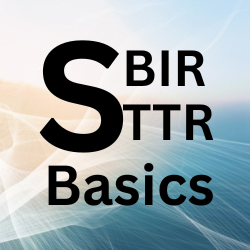Several companies recently asked me to help with a serious but avoidable compliance issue: misrepresenting labor rates in federal grants. This often happens by mistake, but it can lead to major legal and financial trouble, especially for those applying for competitive and tightly regulated funding like NIH grants.
The Situation: A Real-World Example of Misrepresenting Labor Rate
In one case, the grant writer advised using the NIH 2023 salary cap of $203,700 for key personnel. This cap is the maximum salary you can charge to NIH-funded projects. The issue started when the company proposed those higher wages but paid lower actual salaries, and still invoiced the higher amounts. Here’s their example of misrepresenting labor rates:
- The CEO was unpaid and not classified as a W-2 employee. His hours were invoiced at the salary cap rate.
- The Principal Investigator (PI) had a salary of $120,000, far below the proposed cap.
The company significantly overstated its labor costs. They misrepresented labor rates in the grant application. Their invoices used the NIH cap rather than the actual salary. As a result, the proposal included false claims related to labor expenses. The discrepancy led to the repayment of awarded funds and the loss of a pending award. Ultimately, the company, not the grant writer, bore full responsibility for the misrepresentation.
Understanding Accountability in Grant Proposals
You, the entity submitting the proposal, are responsible for the accuracy and truthfulness of all information provided. Relying on external advisors, such as grant writers, does not absolve the company of its obligations to ensure compliance regarding labor costs.
Federal agencies, including the NIH, operate under strict cost allowability and documentation guidelines. Any inconsistency between proposed and actual compensation can trigger audits, fund clawbacks, and, in severe cases, legal action under the False Claims Act.
Clarifying Labor Costs: What Can and Cannot Be Proposed
Companies must ensure that proposed salaries reflect real, supportable, and reasonable compensation plans. While you are allowed to anticipate increases in compensation during the project period, these projections must be:
- Documented in internal planning records
- Consistent with company compensation policies
- Expected and intended by the business
For example, if your CEO currently works unpaid, but you plan to begin paying him $200,000 annually when the project starts. He plans to dedicate 8 hours per week (20% ) to the project. The invoiceable amount for his time is what he costs the company. You cannot charge the grant 20% of a $200,000 salary unless you actually pay him the full amount. Paying only part of the salary or relying on a theoretical amount doesn’t meet compliance standards. You must pay the full base salary to legitimately allocate a percentage of it. So, charging the award $40,000 (20% of $200,000) and paying out only that amount to the CEO violates all the rules.
Best Practices for Ensuring Labor Rate Compliance
To avoid falling into similar traps, companies should adopt the following best practices:
- Document Actual Salaries: Ensure that proposal salary information matches actual compensation as shown in payroll records or offer letters. [Note: There are several ways to compensate a CEO the salary cap levels legitimately and only have a cash impact of $40,000. You must tailor those methods to your specific entity.]
- Avoid “Plugging In” the NIH Cap by Default: Only use the NIH cap if it matches the actual or reasonably expected compensation.
- Consult Your Internal Finance Team: To maintain internal consistency, verify all proposed numbers with your accounting and HR departments.
- Maintain Transparent Internal Policies: Clearly outline compensation policies, especially for founders and key personnel not currently receiving salaries.
- Implement Internal Reviews Before Submission: Establish a compliance review process to ensure all budget items are accurate and well-supported before proposals are submitted.
Final Thoughts: Accuracy in Grant Proposals Is Non-Negotiable
Grant funding can be a powerful tool to advance your company’s mission, but it comes with a responsibility to be truthful and precise. Misrepresenting labor costs, even unintentionally, can jeopardize your current and future funding opportunities and expose your business to legal risk.
Presenting a conservative and fully supportable proposal is better than facing the fallout of overstated or misleading information.
Stay tuned for my article on how to structure executive compensation during federally funded projects and what documentation is required to support cost allocations.

